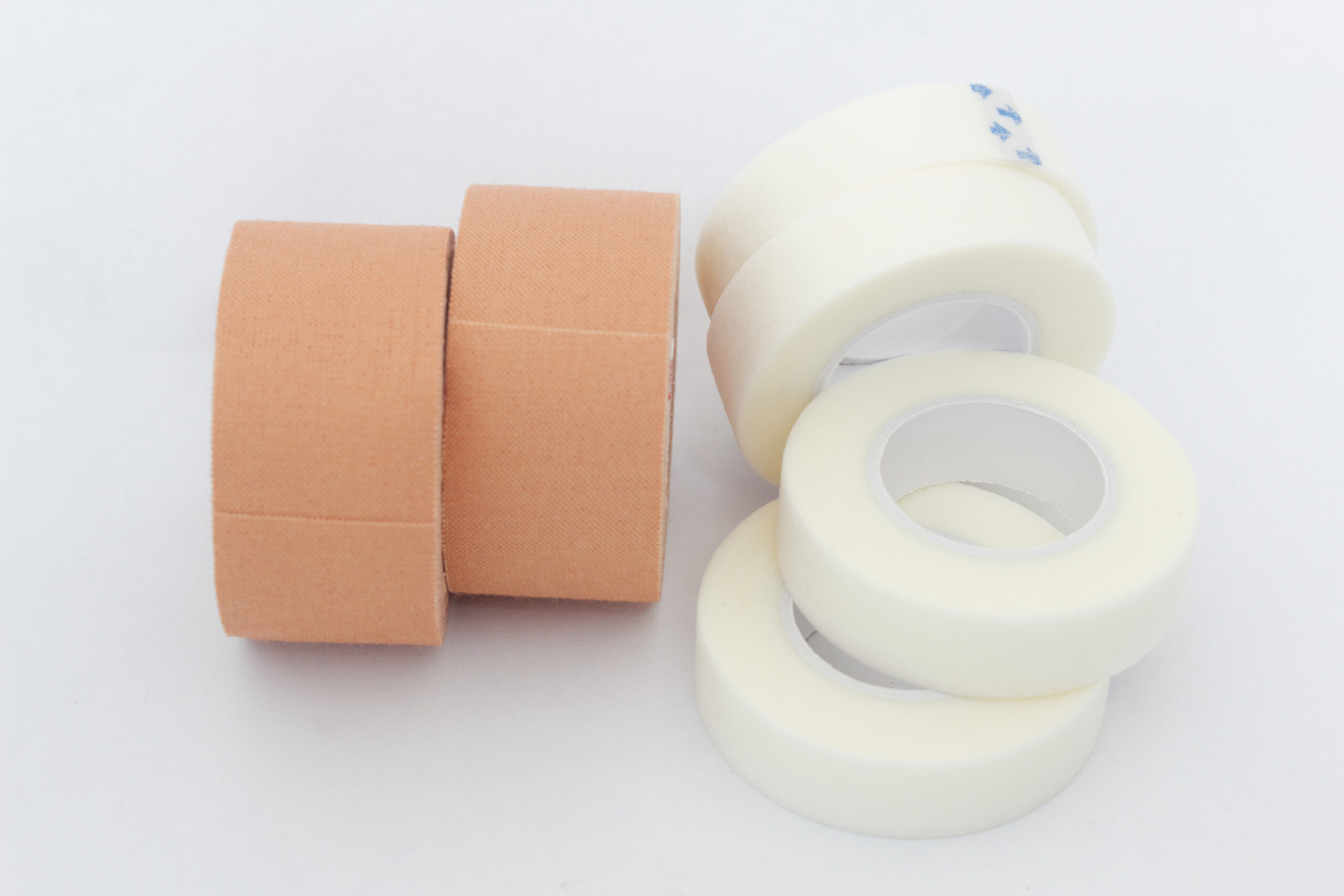Medical tape isn’t something most people have to deal with on a regular basis, but if you work in the medical field or with patients and injuries, it’s important to know about the different types of medical tape and which applications they are best suited for. There are five main types of medical tape we stock at Team Medical Suppliers, being Silicone Tape, Sports Tapes & Strapping, Zinc Oxide Tapes (Leukoplast), Hypoallergenic Tapes (Micropore), Retention Tapes (Hypafix), as well as a collection of others, each designed to help address different needs, so understanding the differences between them can make sure you always have the right type of tape on hand when you need it. In this article, we explore the intricate details of each to help you answer this question.
1) Silicone Tape
Silicone tape is a type of medical tape that is hypoallergenic and resistant to water. As such, it’s ideal for use on areas where moisture might cause irritation, as in your armpits or neckline. Silicone provides high bio-compatibility with the skin, ensuring no harm is done to the affected tissue, ideal for patients with sensitive skin. It also comes in handy when you need strong adhesion on areas like knees and elbows since silicone tape provides a good stick-to-skin ratio, conforms excellently to the profile of the body, all while minimizing pain during removal. Silicone will benefit treatment in terms of monitoring the wound, too, as the transparency of the material provides more visibility of the affected area, preventing the common need for removal and more in-depth inspection.
Silicone tape doesn’t have great tensile strength, however, so if your application requires an extended period of wear, a different type may be more appropriate.
2) Sports Tapes & Strapping
Injuries in sports are incredibly common, if not inevitable for those with high-intensity, high-contact demands. Sports tape & strapping is utilised by athletes to add both a protective and preventative mechanism over at-risk areas of the body either to encourage particular movement, improve joint stability, relieve pain, or add compression on soft tissue in order to reduce swelling. The highest-quality sports tape will therefore have to provide this support and compression to muscles, tendons, and ligaments without restricting range of motion needed for competition. This tape is best used during both game days and training sessions. It’s also good for covering scratches and blisters during a race. This is a practice done not only to rehabilitate players after an injury, but also to prevent re-injury or exacerbation moving forward.
3) Zinc Oxide Tapes (Leukoplast)
You will most likely find zinc oxide tape in a first aid kit as these are one of the best materials for the immediate addressing of common injuries to prevent further complications. Zinc oxide tape is, unsurprisingly, made from zinc oxide, which is a naturally occurring mineral and used to protect skin and soft tissue injuries, such as minor cuts, scrapes and burns. Zinc oxide tape usually comes in strips that stick to themselves when applied to help eliminate wrinkles or skin folds. Sometimes it comes as an all-in-one bandage that has a cloth backing with an adhesive strip on top. These bandages generally stay on until you remove them (within reason) and are ideal for keeping out dirt and other nasty contaminants from wounds, particularly when you can’t quite justify a full cast!
4) Hypoallergenic Tapes (Micropore)
If someone suffers from allergies, then it can be a concern that the medical tape applied to an affected area will only create further complications rather than providing the healing needed. When in doubt, using hypoallergenic tapes is always a good choice. The adhesive doesn’t irritate skin, so you don’t have to worry about rashes or blisters, yet they are incredibly durable, meaning they will be secure to the point in question. It is for this reason hypoallergenic tapes are the most common choice of medical tape used in hospitals throughout Australia.
5) Retention Tapes (Hypafix)
When you forced to tackle wounded areas of the body that prove difficult, either due to the particular shape of the body part or the contour of the wound, retention tapes are ideal as they are soft, flexible and manageable enough to perform the desired function. Self-adhesive, non-woven fabric sheets provide strong and rapid fixation to the area, whilst also offering complete coverage with the entire dressing to reduce wastage. An ideal application of retention tapes would be with joints, for example, as they would protect the wound without constraining any movement to the patient.

